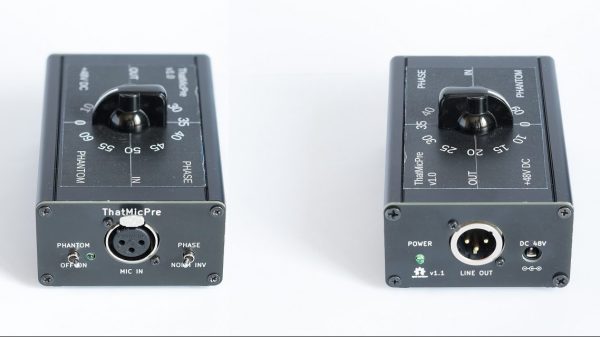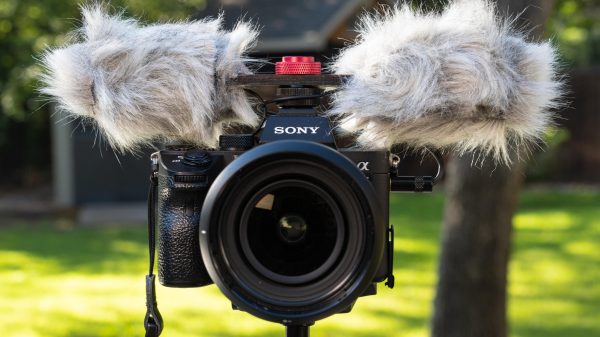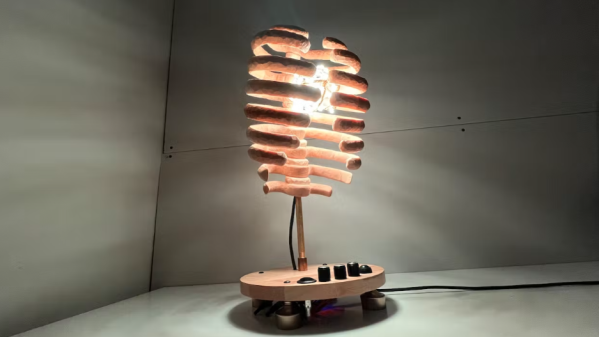While audiophiles might spend gazillions of hours finely honing a microphone stand that isolates their equipment from the trials and perturbations of the world, most of us who use a microphone don’t need anything so elaborate. Hackaday contributing editor [Jenny List] hacked together some thrift store finds into a snazzy adjustable mic setup as you can see in the video below the break.
Using the flexible neck and clamp of an IKEA Kvart as a base, [Lists]’s mic stand looks like a simple, but exceedingly useful tool. She first removed the lamp, shade, and cord before designing a 3D-printed mount to attach to the lamp’s neck. Since the bolted lamp end of the connection goes straight to an action camera mounting system, we can see this being handy for mounting any number of other things besides microphones. Another 3D-printed mount attaches the Logitech gaming microphone to the action camera connector, and the whole thing can either be bolted together or use a printed pin. All the parts can be found in a GitHub repository.
Looking for more microphone hacks? Check out this DIY ribbon microphone or the Ambi-Alice ambisonic mic.

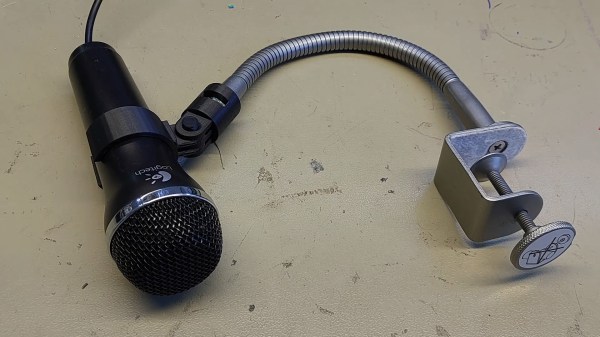
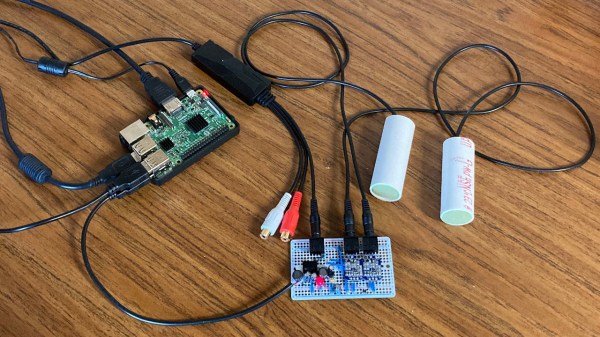
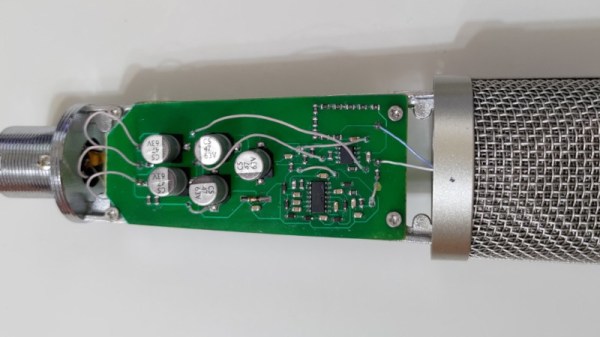
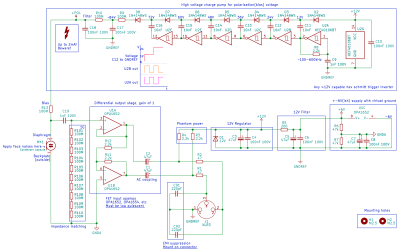 The capsule and body are off-the-shelf items — what he’s produced is the bias voltage supply and preamplifier. In both cases these are the interesting parts of a condenser microphone, so their circuit bears a second look.
The capsule and body are off-the-shelf items — what he’s produced is the bias voltage supply and preamplifier. In both cases these are the interesting parts of a condenser microphone, so their circuit bears a second look.
